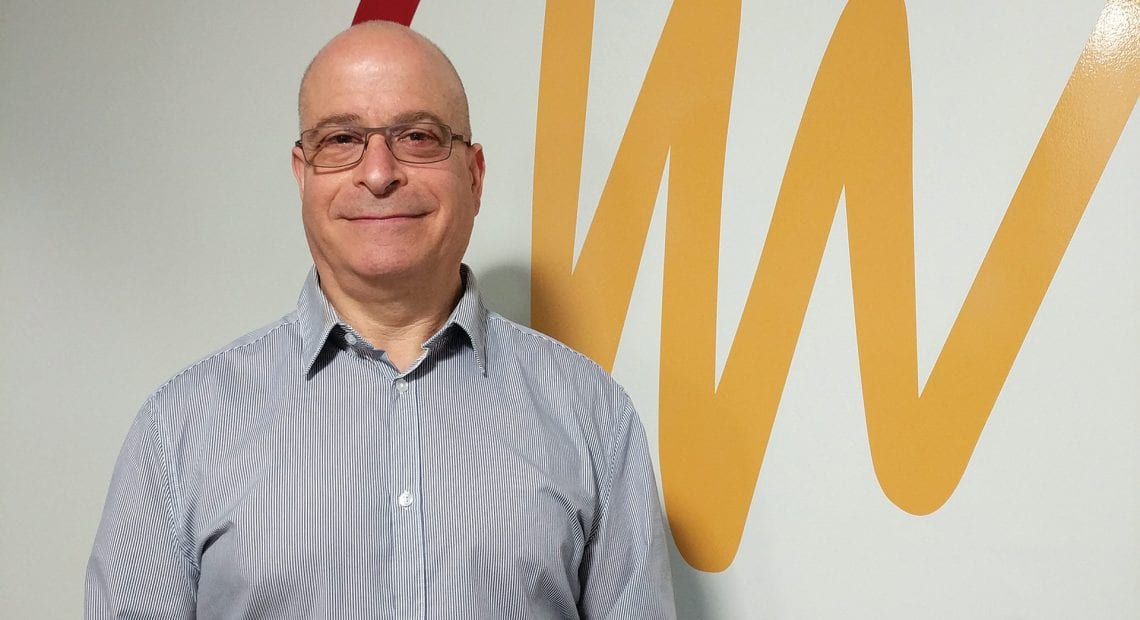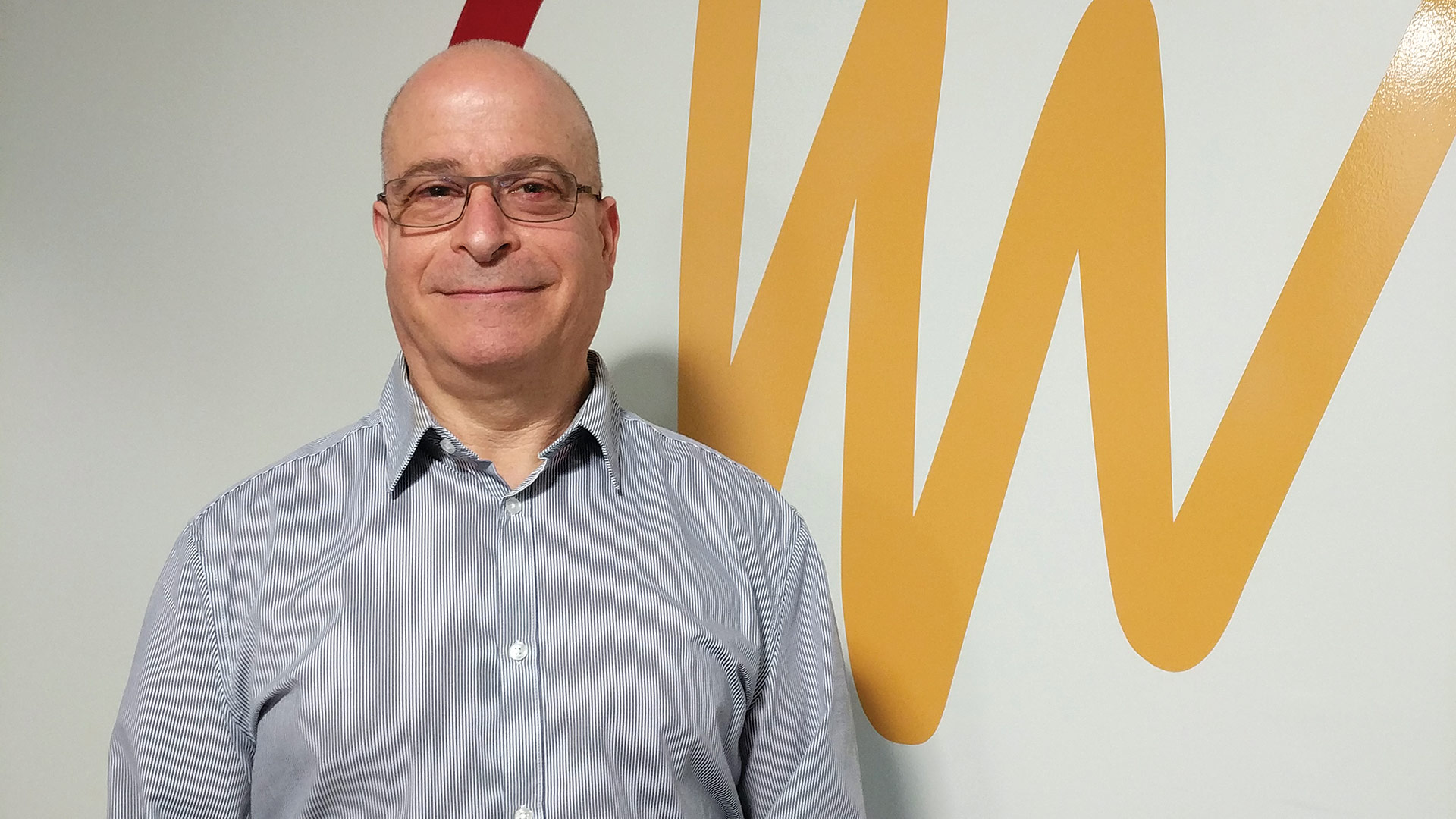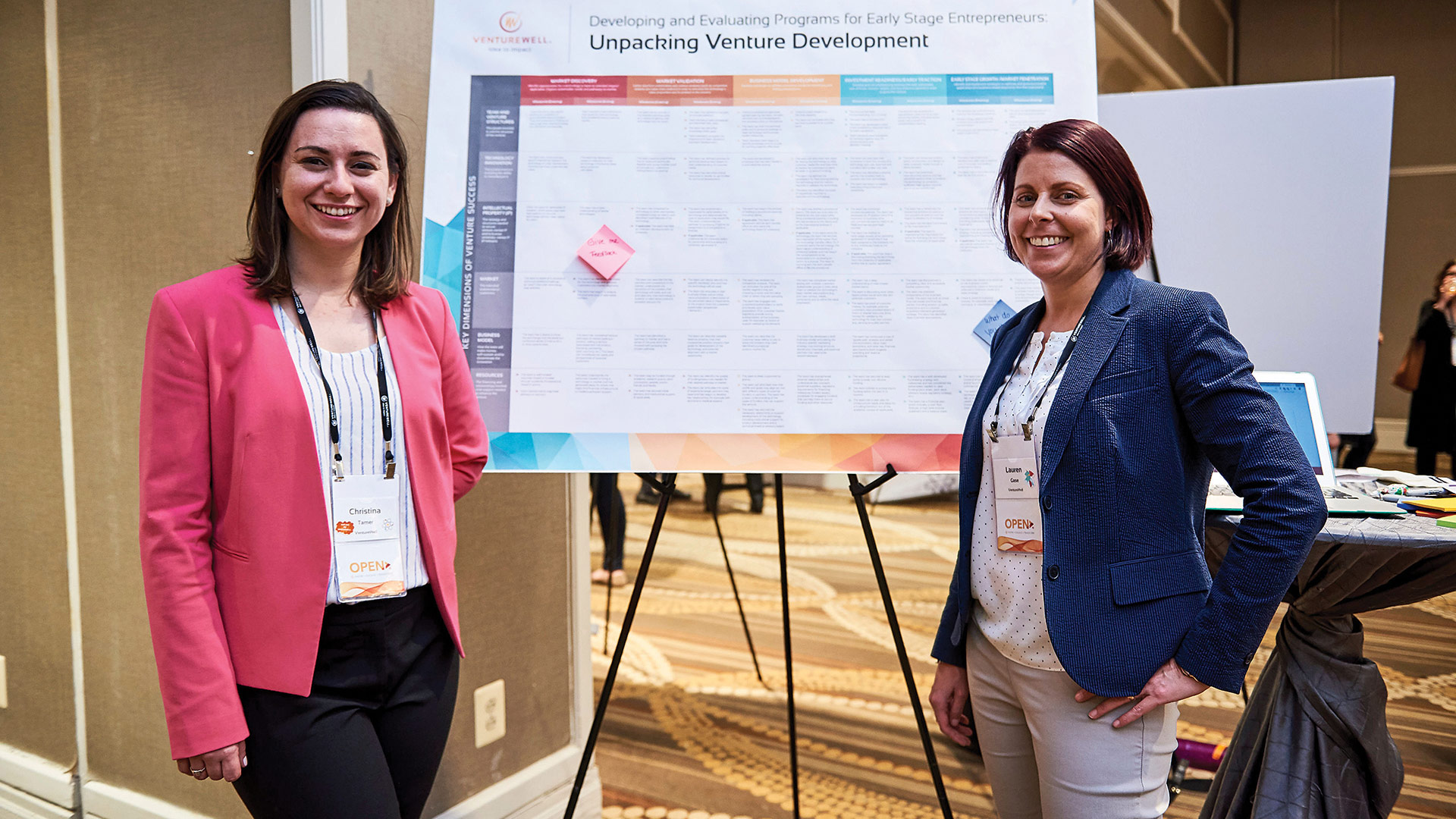
VentureWell Seeks Global Impact Through Entrepreneurship
World Changers

Phil Weilerstein wants to help innovators move their ideas into practice — and perhaps change the world.
Katya Cherukumilli has a big idea with potentially bigger impact.
Her nonprofit startup, Seattle-based Global Water Labs, is developing a scalable and affordable fluoride-removal technology that aims to reduce the incidence of irreversible diseases as a result of consuming excess naturally occurring fluoride in groundwater — a risk common to some 200 million people worldwide.
She credits Hadley-based VentureWell with helping her move her big idea beyond the headspace into something tangible and, hopefully, impactful.
“One of the things VentureWell helped me realize was that the business model has to be really different for the R&D pilot phase and the scale-up and commercialization and expansion phase,” she said. “In a sense, I pivoted from how I was thinking about the fundraising for the initial pilot phase to thinking about who the different donors and funding agencies would be for the scale-up phase.”
VentureWell, which has been promoting technology entrepreneurship — especially in the sciences, medicine, and the environment — for almost a quarter-century, was a key reason Cherukumilli was able to even reach the pilot stage, thanks to $25,000 grant, but also connections to additional opportunities and networks she otherwise wouldn’t have access to.
“One of the things VentureWell helped me realize was that the business model has to be really different for the R&D pilot phase and the scale-up and commercialization and expansion phase.”
Myriam Sbeiti tells a similar story. While at New York University, she co-founded Sunthetics, which has developed a solar-powered device to use during the chemical-input phase of nylon production, helping eliminate greenhouse-gas emissions from the manufacturing process. But she quickly learned that conceiving a way to solve a worldwide problem and actually solving it are two different things.
“I’ve learned that entrepreneurship is finding solutions to completely new problems every day. I’ve been able to develop many new competencies from scratch — from negotiating contracts to navigating regulatory hurdles,” she said. “VentureWell has been a catalyst for our development. They provide a healthy balance of business mentoring and support while also keeping in mind the feasibility and viability of a venture’s technology.”
It’s that gap — between good ideas and viable businesses — that VentureWell has been trying to bridge since its founding in 1995, largely working with teams of college students and faculty. Its success to date, and its future promise, have both turned heads and drawn significant funding support, from the likes of the Lemelson Foundation, USAID, the European Investment Fund, the National Institutes of Health, the Autodesk Foundation, the Ewing Marion Kauffman Foundation, the National Science Foundation, to name a few.
“Our objective broadly is to impact entrepreneurship and innovation at colleges and universities,” VentureWell President Phil Weilerstein told BusinessWest, noting that its programs encompass grant making, faculty development, conferences, and curriculum — all with the goal of “making the idea of entrepreneurship more available to students.”

Laura Sampath says VentureWell is looking to adapt its model to enterprises that aren’t college-based.
More specifically, the idea is to foster programs that help people move ideas into practice — and then scalability.
“As someone who’d started a business in the Valley before this, I wish I’d have had someone share these things with me so that the startup process was more effective, efficient, and less painful,” he went on. “It’s very rewarding, knowing the value it has for the people we work with, and being able to do it in a way that not only supports that particular venture but creates, through that venture, other pathways.”
Such a program is needed, if a recent report by the National Chamber Foundation and the Millennial Generation Research Review is to be believed. While more than 2,100 U.S. colleges and universities have added an entrepreneurship curriculum, the report notes, a large percentage of former students claim that the coursework did not adequately prepare them to start a business. Which raises the question, how can student innovators gain the necessary tools and knowledge to take their idea to market?
Enter VentureWell, and its team of 56 individuals trying to change the world from their quiet corner of Hadley. “We provide people with a healthy start,” Weilerstein said, “and get them on a pathway they might not otherwise have found.”
How they do that can’t be explained in a few words — and the potential worldwide impact is broader still.
What’s the Big Idea?
VentureWell was established in 1995 with support from the Lemelson Foundation, founded by prolific independent U.S. inventor Jerome Lemelson, who believed invention was essential to American economic success and vitality and envisioned a program that would foster the next generation of collegiate inventors and help them bring their ideas to impact.
In 1995, Lemelson convened a group of higher education faculty and administrators at Hampshire College to discuss how to make his vision a reality. In the meeting, Lemelson described an organization that would support educators in implementing a hands-on, experiential approach to learning while at the same time helping students develop new products and boost them toward commercialization.
VentureWell — originally called the National Collegiate Inventors and Innovators Alliance — was created out of this meeting. It began offering grants to faculty to start programs in technology entrepreneurship, particularly ones that focused on the development of ‘E-teams’ — groups of students, faculty, and advisors working to commercialize a novel idea. VentureWell then funded the best E-teams coming out of those courses and programs, helping them bring their inventions to market.

Christina Tamer (left), senior program officer, and Lauren Gase, senior evaluation analyst, at VentureWell’s annual OPEN conference, which promotes connections among innovators and entrepreneurs.
The organization has since grown to a membership of 200 colleges and universities from across the U.S., engaging — and funding — thousands of undergraduate and graduate student entrepreneurs each year.
“Our approach from the outset has been to develop pathways for people with good ideas to figure out how to make an impact in the world through an innovation process that leads to scaled entrepreneurial outcomes,” Weilerstein said. “We’ve been successful at doing that both in the individual E-team ventures as well as working with institutions — with faculty and folks who are the enablers of this work — to improve the productivity of their environments.”
The end goal, he added, is to create pathways and support resources that enable ventures not only to emerge, but emerge with the ability to scale up and sustain that growth.
This is accomplished in three ways: programs to assist early-stage innovators, faculty initiatives, and cultivating broad-based innovation and entrepreneurship networks.
E-teams — VentureWell’s most common approach to early-stage innovation — are formed through competitive grants accessed through universities, Weilerstein explained. “Students are driving the projects — they’re the entrepreneurs, and they’re expected to be the startup founders, typically after they graduate. They learn by doing early-stage development in school, so they’re in good position to raise money and launch the company after graduation. Our training programs are designed to support that process.”
VentureWell’s second means to achieve its goals is by supporting faculty initiatives at colleges and universities — basically, challenging innovation and entrepreneurship (I&E) faculty to pioneer new and better ways of engaging their students in the entrepreneurial process. To these ends, the organization issues grants up to $30,000 to support science- and technology-based I&E in higher education.
Finally, VentureWell wants to cultivate networks of inventors and entrepreneurs to build an ecosystem of innovation.
“VentureWell has awarded over $11 million to 450-plus faculty at more than 230 different institutions,” Victoria Matthew, VentureWell senior program officer, said during a recent conference session on a project called Mission 2025, which was designed to elicit a vision for the future of I&E education. “Over that time, I&E education ecosystems have flourished and advanced such that competitions, entrepreneurship centers, and maker spaces are now standard on many campuses. While the progress is impressive, many in our community are now asking: ‘where do we go from here?’”
Indeed, Laura Sampath, vice president of Programs, told BusinessWest that, more than five years ago, VentureWell started being recognized nationally for the work it was doing with early-stage innovators, and funders were asking how to translate the model to support innovators who were not necessarily university-based. So the organization started working with USAID and the Bill & Melinda Gates Foundation on programs that supported scientific community.
“It’s the same at its core with a slightly different participant base, and those programs have continued to grow,” Sampath said, adding that VentureWell also works with the U.S. State Department to promote enterprises in Africa, Eastern Europe, and other areas. “With this model we developed over our first 20-plus years in existence, there are a great deal of transferrable ideas within that.”
Getting Down to Business
Again, the idea is to effect broad change in some area of technology, healthcare, or environment — and change lives, perhaps worldwide.
“We want to have an impact on educational and institutional systems, infrastructure, and ecosystems that provide the breeding ground and opportunity space where people with ideas can begin to think about the applications of their ideas,” Weilerstein said. “We work with the innovators to move that forward to support opportunity and investment and jobs — but also societal benefits through health and environment impacts.”
Sometimes the innovator doesn’t even understand what the eventual value of his or her invention will be.
“Like, I might know how to put a coating on a piece of glass so that nothing will stick to it. Well, who cares about that?” Weilerstein said, suggesting that, perhaps, people who make solar panels and want them to shed dust may value that idea most. “The initial thinking was, ‘I can make windows that never need to be washed.’ Well, it turns out that’s not actually worth much to people. So the innovators are finding out where the value is and what will actually lead to a viable, scalable business.”
In short, the E-teams and other programs are teaching students and faculty how to go from thinking like a scientist to thinking like an entrepreneur. “How can we support the scaling of your brilliant research idea and help it move more quickly or successfully into use by other people? That’s the critical jump between nothing ever coming of a really interesting research result and something actually world-changing happening.”
At VentureWell’s inception, Sampath added, the field of innovation and entrepreneurship was very different, and the types of institutions it works with must continue to evolve along with societal needs. “Part of what we now need to do is create that engine in a way that keeps us up with the times, that ensures we’re meeting the need of the [innovation] field as it stands today, which is constantly changing. And there’s no shortage of opportunity.”
Part of Mission 2025, Weilerstein said, is building tech-innovation networks in geographic pockets — like in the Midwest — that don’t have the advantages of, say, Boston, where resources, funding, and talent to build a billion-dollar company are close at hand.
“This is very rewarding work,” he added. “I feel lucky every day to come to work. It is meaningful work, both for the outcomes that happen and the way the work we do changes people.”
Even if an idea never turns into a viable business, the E-team experience often changes the mindset of the students, who then bring that heightened entrepreneurial approach to whatever career they attempt.
And if an idea does take root? Well, the world is full of massive problems in need of solving.
“The solutions to the problems facing society are often found at scale in an entrepreneurial way, and I think that’s true of things like climate change, pollution issues, and healthcare,” he went on. “People often are reluctant to associate problem solving with entrepreneurship, but that’s the way we approach it. Our work starts with invention. That’s really at the core of what we’re looking for — people who have figured out how to take a good idea and reduce it to practice. And the good idea is usually a solution to somebody’s problem.”
To an entrepreneur, the end goal of a good idea might be a business, independence, and financial security. That’s all fine, but Weilerstein wants people to think bigger.
“You have the satisfaction of a career, but it’s also an important way for society to solve problems,” he said. “All the things we think of as a crisis, we also see as an opportunity.”
Joseph Bednar can be reached at [email protected]





